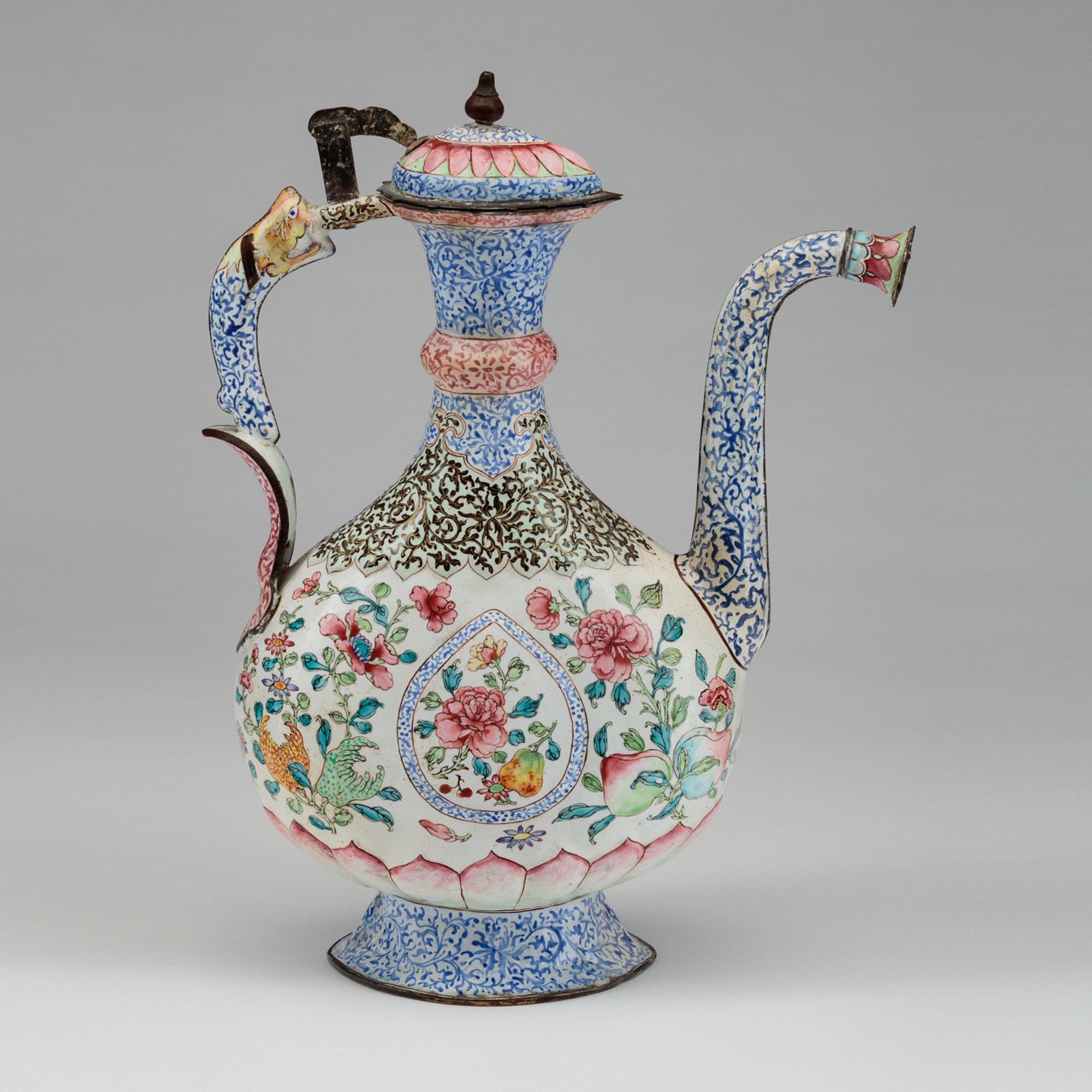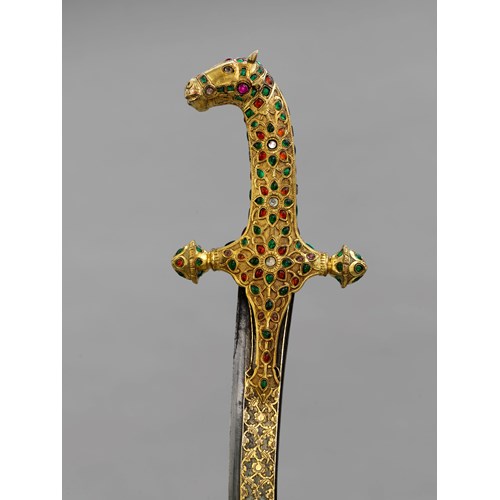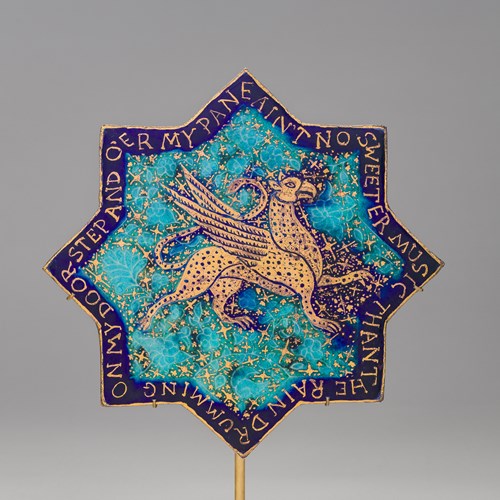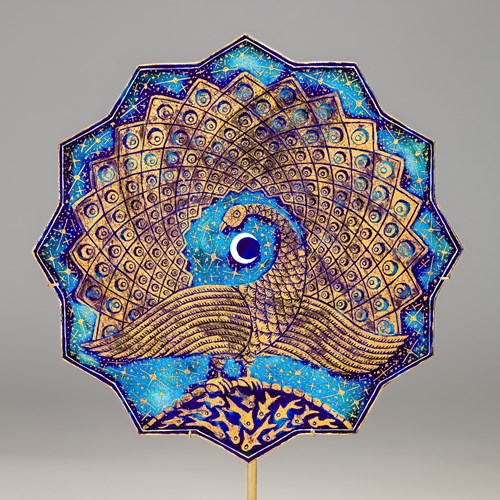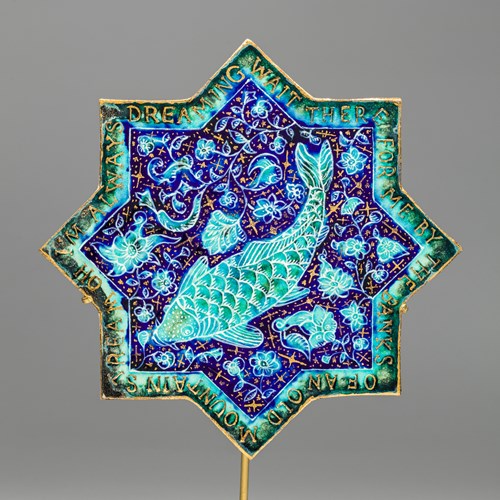Ewer Made for the Indian Market
Period 18th century
Origin China, Guangzhou
Medium Copper enamel
Dimension 31 x 23 cm (12¹/₄ x 9 inches)
This ewer was produced in Guangzhou, where, from the second half of the eighteenth century, artisans in small workshops manufactured enamel goods of the highest quality, some destined for court and some for export.3 The artisans were used to producing foreign shapes and decorations. In this case, the form of the ewer clearly derives from Indian metalwork. Its decoration, on the other hand, is entirely Chinese. Shaped, repoussé panels on each side contain peony flowers and ripe peaches, symbolising beauty, nobility and long life. Peony scrolls wind round the foot and beneath the mouth, while the main ground is covered with a dense, brocade-like pattern and repeating scrolls in red and black. The decoration recalls that seen on painted enamels made for the Qing dynasty court. However, this vessel was clearly made for export. The skilled enamel decorators in Guangzhou had a common repertory for goods, reproducing patterns and styles they were familiar with, even on shapes that were not.
Period: 18th century
Origin: China, Guangzhou
Medium: Copper enamel
Dimension: 31 x 23 cm (12¹/₄ x 9 inches)
Literature: Footnotes:
1. Susan Stronge. 1985. Bidri Ware. Inlaid Metalwork from India. London: Victoria and Albert Museum. p.40.
2. Al-Sayyed Muhammad Khalifa Hammad. 2020. "Ewer" in Discover Islamic Art, Museum With No Frontiers.
http://islamicart.museumwnf.org/database_item.php?id=object;ISL;eg;Mus01;20;en
3. Shih Ching-fei and Wang Chongqi 施静菲, 王崇齊. 2013. “Qianlongchao yuehaiguan chengzuo zhi ˂Guang falang˃ 乾隆朝粤海關成做之˂光琺瑯˃” (‘Canton enamels’ Manufactured at the Guangdong Maritime Customs in the Qianlong Period)”, in Guoli Taiwan daxue meishu shi yanjiu jikan 國立台灣大學美術史研究集刊.35 (National Taiwan University Art History Research Papers vol.35). Taipei: National Taiwan University. pp.87-163+165-184+257. Shih Ching-fei 施静菲. 2014. “Qianlong yuehaiguan chengzuo. Guangfalang fukeban zuopin乾隆粤海關成做。光琺瑯復刻版作品 (Imperial "Guang falang" of the Qianlong Period Manufactured by the Guangdong Maritime Customs. Painted enamels duplicate works from Guangzhou)”, in Gugong wenwu jikan故宫文物季刊 (Palace Museum Quarterly) no.373. Taipei: National Palace Museum. pp.50-63.
More artworks from the Gallery


